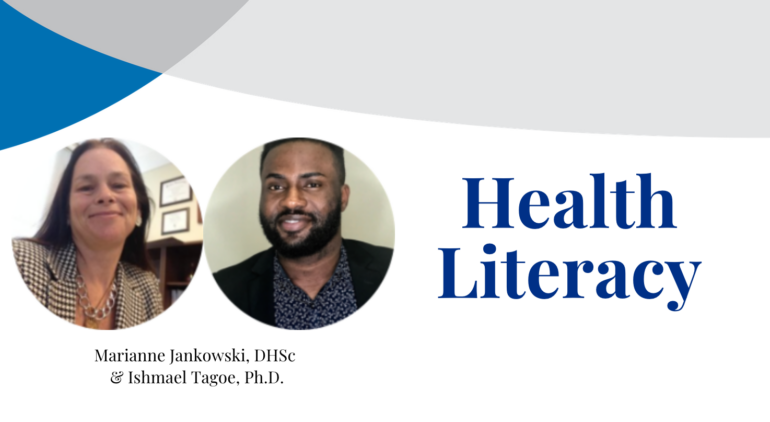Health literacy is a critical component of public health, influencing individuals’ ability to access, understand, and use health information to make informed decisions about their health. It plays a crucial role in promoting health equity by ensuring that all individuals, regardless of their background or circumstances, have the knowledge and skills needed to maintain and improve their health. Health literacy involves various skills, including reading, understanding, and interpreting health information; deciphering medication instructions; understanding health care risks and benefits; and, finally, making decisions and taking appropriate actions to improve health.
Cultural competence plays a crucial role in promoting health literacy. This involves understanding and respecting the cultural beliefs, values, and practices of different communities. By incorporating cultural competence into public health programs and services, we can ensure that health information is delivered in a way that is sensitive to the cultural needs of diverse populations.
Promoting health literacy among the patients and community we serve is impactful in the following ways.
Empowering individuals
Health literacy empowers individuals to take control of their health. It enables them to understand health information, make informed decisions about their health, and engage in health-promoting behaviors.
Improving health outcomes
Individuals with higher health literacy are more likely to engage in preventive health behaviors, such as screenings and vaccinations, leading to improved health outcomes. They are also better able to manage chronic conditions, reducing the risk of complications.
Enhancing healthcare quality
Health literacy is essential for effective communication between healthcare providers and patients. It ensures that patients understand their diagnoses, treatment options, and how to follow care plans, leading to better healthcare outcomes.
Reducing health disparities
Limited health literacy is associated with higher rates of health disparities. By improving health literacy among vulnerable populations, such as low-income and minority groups, we can reduce disparities and promote health equity.
Lowering healthcare costs
Improved health literacy can lead to lower healthcare costs by reducing unnecessary hospitalizations, emergency room visits, and medication errors. It also encourages individuals to seek preventive care, which can reduce the need for costly treatments.
The National Institutes of Health has outlined some key health literacy research findings that are useful for health professionals.
- We must not blame the individual for not understanding information that has not been made clear.
- Everyone, no matter how educated, is at risk for misunderstanding health information if the topic is emotionally charged or complex.
- In almost all cases, physicians and other health professionals try to, and believe they are, communicating accurate information.
- In some cases, patients may believe they have understood directions but may be embarrassed to ask questions to confirm their understanding.
- Healthcare organizations and their systems and procedures have a significant role to play in ensuring understanding in the healthcare setting.
- It is increasingly difficult for people to separate evidence-based information, especially online, from misleading ads and gimmicks.
- The communication of “risk” in an effective and fair way continues to be a challenge for both the provider and the patient.
- There are additional challenges in understanding how to select insurance plans and benefits, especially for those who have not previously been insured.
Here are some strategies to improve health literacy.
Plain language
Use plain language and avoid medical jargon when communicating health information. This makes it easier for individuals to understand complex health concepts.
Health education
Provide health education programs that focus on improving health literacy skills, such as understanding health information, navigating the healthcare system, and making informed health decisions.
Provider training
Train healthcare providers to communicate effectively with patients of varying health literacy levels. Teach-back techniques can help ensure patient understanding.
Policy changes
Advocate for policies that support health literacy, such as improving the readability of health materials and ensuring language access for non-English speakers.
Community engagement
Engage with communities to raise awareness about the importance of health literacy and provide resources to improve health literacy skills.
Health literacy plays a crucial role in promoting health, preventing disease, and improving healthcare quality. By improving health literacy among populations, we can empower individuals to make informed decisions about their health, reduce health disparities, and enhance healthcare outcomes. Investing in health literacy is an investment in the health and well-being of communities. For more information on health literacy, visit Health Literacy | National Institutes of Health (NIH).

